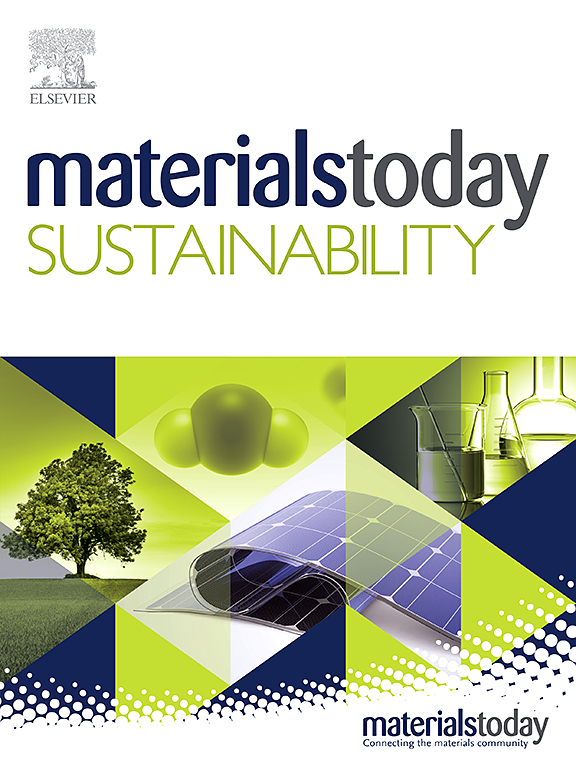Theoretical prediction of materials with diffuse electrons with possible applications in redox catalysis and quantum computing
IF 7.1
3区 材料科学
Q1 GREEN & SUSTAINABLE SCIENCE & TECHNOLOGY
引用次数: 0
Abstract
The spin of diffuse electrons has been proposed in the literature as qubit for quantum hardware applications. Here we provide the first investigation of the thermal stability for a newly reported family of materials with diffuse electrons. This material has a diamond-like grid of Li + centers bridged by diamine chains NH2(CH2)nH2N of varying carbon length. The tetracoordinated lithium-amine center is surrounded by one diffuse electron solvated by the N–H bonds. Previous work has demonstrated the tunability of the electronic structure of this material, with short chain lengths producing a metallic material and longer a semiconductor. Density functional theory-based ab initio molecular dynamics simulations are employed to characterize the thermal stability and melting point of the crystalline material. Calculations show that the thermal stability ranges from 100 to 220 K, primarily depending on the carbon chain length, with longer chains increasing the stability. Melting of the material is characterized by dissociation of the diamine coordination and formation of disordered clumps of undercoordinated Li-diamine centers. These melting points are well above temperatures used in typical quantum computing applications. The computational study provides insight into avenues for the future development of similar materials and the improvement of their stability.
具有扩散电子的材料的理论预测及其在氧化还原催化和量子计算中的可能应用
漫射电子的自旋已经在文献中被提出作为量子硬件应用的量子比特。在这里,我们首次研究了一类新报道的具有漫射电子的材料的热稳定性。该材料具有由不同碳长度的二胺链NH2(CH2)nH2N桥接的类似金刚石的Li +中心网格。四配位的锂胺中心被一个被N-H键溶剂化的扩散电子所包围。先前的工作已经证明了这种材料的电子结构的可调性,短链长度可以产生金属材料,长链长度可以产生半导体。采用基于密度泛函理论的从头算分子动力学模拟来表征晶体材料的热稳定性和熔点。计算表明,热稳定性范围为100 ~ 220 K,主要取决于碳链长度,碳链越长稳定性越高。材料熔化的特点是二胺配位的解离和不配位的li -二胺中心无序团块的形成。这些熔点远高于典型量子计算应用中使用的温度。计算研究为类似材料的未来发展和提高其稳定性提供了深入的见解。
本文章由计算机程序翻译,如有差异,请以英文原文为准。
求助全文
约1分钟内获得全文
求助全文
来源期刊

Materials Today Sustainability
Multiple-
CiteScore
5.80
自引率
6.40%
发文量
174
审稿时长
32 days
期刊介绍:
Materials Today Sustainability is a multi-disciplinary journal covering all aspects of sustainability through materials science.
With a rapidly increasing population with growing demands, materials science has emerged as a critical discipline toward protecting of the environment and ensuring the long term survival of future generations.
 求助内容:
求助内容: 应助结果提醒方式:
应助结果提醒方式:


